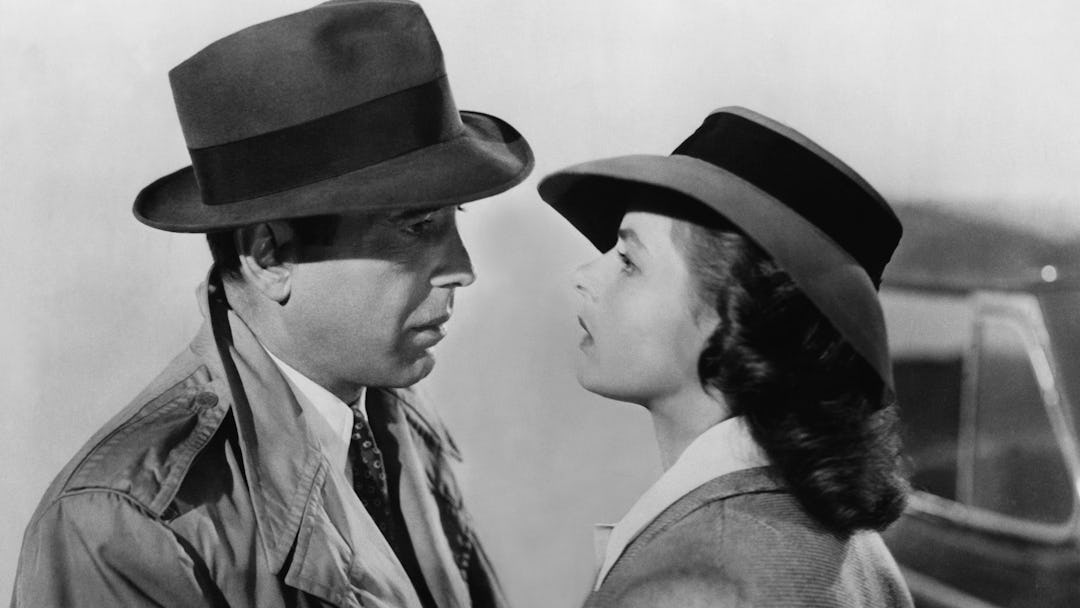Thanks to the glory of the internet, we no longer need film school to offer us a peek at the minds behind some of cinema’s greatest works. Scripts for classic movies are available online and can teach us a thing or two about visionary writing. We looked at the scripts of ten famous films for a few pointers on compelling stories, fascinating characters, and the power of words.
Chinatown
Film schools around the world look to Robert Towne’s masterful Chinatown script to teach students about the essentials of screenwriting. The story about a private detective caught up in a web of corruption and murder is celebrated as one of the best (“perfect” is the word you’ll usually hear) in cinema history, made during an era of bold studio filmmaking. The screenplay contains lessons in constructing compelling character conflict and mystery, showing restraint, and more. Study the full script over here.
Blue Velvet
After the resounding failure of David Lynch’s Dune, he wanted to return to a more personal place with his filmmaking. The director started forming his thoughts for what would become Blue Velvet, about a mysterious nightclub singer and group of deranged criminals, with only three ideas: a severed ear in a field, a “feeling” (and the film’s title), and Bobby Vinton’s version of the song “Blue Velvet.” After several drafts, he pursued a deal. Sometimes a fragment or a seed is all it takes. Read the full script over here.
Raiders of the Lost Ark
“I made it as a B-movie… I didn’t see the film as anything more than a better made version of the Republic serials,” director Steven Spielberg once said of his script for Raiders of the Lost Ark. The homage to old adventure serials perfectly captures the lighthearted aspects of those yarns with effective characterization and a likable hero who drives the action — not the other way around. Read the full script over here, and see what notes star Harrison Ford added to his copy of the screenplay during the making of the movie.
Taxi Driver
Screenwriter Paul Schrader was at the top of his game when he penned the script for Martin Scorsese’s Taxi Driver. The story about an unhinged cabbie who seeks to do away with the scum on the streets of New York City is a powerful character study. Schrader doesn’t steer us toward an opinion about Bickle. The ambiguous characterization fits the conflicted, confused tone of the troubled figure and makes the movie’s equivocal ending feel like a dream. Read the full screenplay.
Pulp Fiction
A lesson in breaking all the rules, Quentin Tarantino’s screenplay for Pulp Fiction will put your script’s dialogue to shame. Defying traditional structure (and just about everything else), Tarantino’s epic of post-modern cinema proved that there was a place for operatic violence, and pushed the boundaries of unconventional characters and storytelling. The film changed the face of modern cinema. Read the full script and an oral history of the movie for more.
Casablanca
Lauded as another one of Hollywood’s “perfect” scripts, the screenplay for Casablanca boasts powerful drama, intrigue, memorable characters and witty dialogue. Here’s what writer John Yorke had to say about one of the story’s central elements:
The crisis occurs when the hero’s final dilemma is crystallised, the moment they are faced with the most important question of the story; just what kind of person are they? This choice is the final test of character, because it’s the moment where the hero is forced to face up to their dramatic need or flaw. . . . in Casablanca Rick has to confront and overcome his selfishness (“I stick my neck out for no man”). . . . you can see the cleverness of the structural design, where the external antagonists are the embodiments of what each protagonist fears most. To overcome that which lies without, they must overcome the chasm within. Read the full screenplay.
2001: A Space Odyssey
“I had been a great admirer of your books for quite a time and had always wanted to discuss with you the possibility of doing the proverbial ‘really good’ science-fiction movie,” Stanley Kubrick wrote to author Arthur C. Clarke in 1964. The two met weeks later, chatted about science fiction for eight hours, and proceeded to make a movie together. 2001 was originally conceived as a novel, but Clarke wound up writing the book while simultaneously working on the screenplay. For a movie with almost no dialogue, the two showed considerable restraint, vision, and trust in their audience. Read the full script.
Breathless
Godard’s Breathless is one of the leading French New Wave works that introduced the auteur theory — the concept that a director’s film was a personal creation, and could be crafted as such, akin to a novel or painting. Godard worked on the script each morning, as he went along during the shoot, feeding actors their lines from behind the camera. This method reinforced his view that a film should reflect its “author” and the production, lending a spontaneous quality to the work. Here’s an example of how Godard issued the “script” to his actors.
Jaws
It defined what the word “blockbuster” means today and managed to pack a wallop without the help of CGI and viral marketing. Peter Benchley and Carl Gottlieb delivered a tension-filled intro, rich characters, and solid structure in the screenplay for Jaws. Read it here.
Citizen Kane
See Orson Welles’ personal working copy of the script for what many believe is the greatest movie ever made. “The Citizen Kane script is the most important screenplay of all time,” said Leila Dunbar, Director of Sotheby’s Collectibles Department. “It was a collaboration where Herman Mankiewicz set the foundation and Orson Welles added the emotion, depth and power, raising the text to a much higher level. Mankiewicz gave the story life but Welles made it immortal.”
